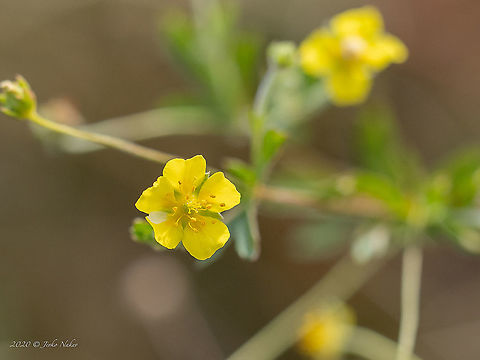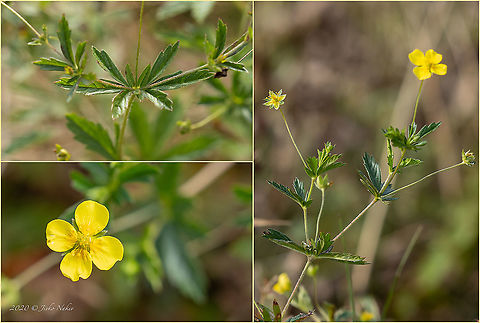
Appearance
"Potentilla erecta" is a low, clump-forming plant with slender, procumbent to arcuately upright stalks, growing 10–30 centimetres tall and with non-rooting runners. It grows wild predominantly in Scandinavia, Europe, and western Asia mostly on acid soils in a wide variety of habitats, such as mountains, heaths, meadows, sandy soils and dunes.This plant is flowering from May to August/September. There is one yellow, 7–11 millimetres wide flower, growing at the tip of a long stalk. There are almost always four notched petals, each with a length between 3 and 6 mm. Four petals are rather uncommon in the rose family. The petals are somewhat longer than the sepals. There are 20–25 stamens.
The radical leaves have a long petiole, while the leaves on the flowering stalks are usually sessile or with short petioles. The glossy leaves are alternate, ternate, consisting of three obovate leaflets with serrate margins. The paired stipules are leaflike and palmately lobed.
There are 2–8 dry, inedible fruits.

Uses
The rhizomatous root is thick. It is inappropriate to be used for food due to extreme bitterness and low caloric value. It can be used as a vegetable dye to dye leather red.The plant is particularly used in herbal medicine as an astringent because of its tannin content, which is unusually high for a herbaceous plant. This is linked to its use as a red dye, which is due to the structurally similar phlobaphene content. Phlobaphenes can be extracted from the root of the common tormentil and is known as "tormentil red", alongside the triterpene alcohol tormentiol. The plant has extremely low toxicity, which was studied by Sergei Shushunov and his team. The roots are a main ingredient of a bitter liqueur from Bavaria and the Black Forest area, called Blutwurz.
It is also used in Ukraine along with Honey in Horilka.
References:
Some text fragments are auto parsed from Wikipedia.